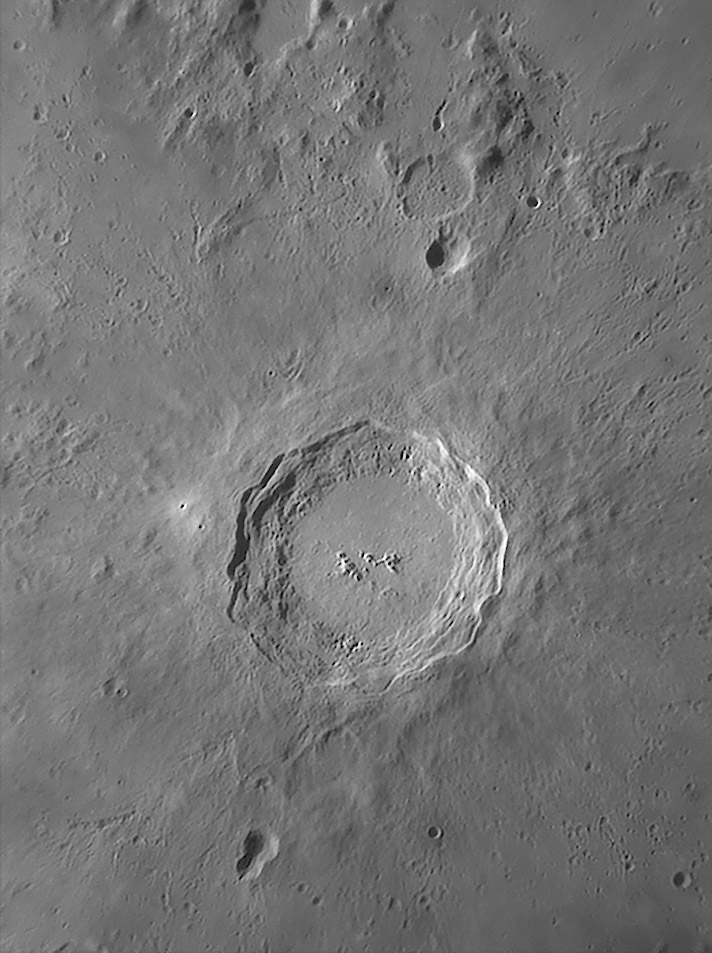
image by Bob Pilz
As soon as I saw Bob’s photo I thought, Wow! That is a very bright crater pit on the west edge of Copernicus that I don’t remember seeing before - is it new? A quick search of the LPOD Photo Gallery did not reveal the crater. Excitement mounts. So then I searched the world’s best collection of high resolution lunar images - LPOD - and found the crater grinning at me on Wes Higgins’ great Mars, giving us further reason to appreciate the shielding properties of Earth’s atmosphere!
PS: Bob has detected 8 crater pits of his image within the floor of Copernicus, the smallest about 750 in diameter - we can almost detect new craters with amateur telescopes!
Technical Details:
July 7, 2007, 09:18UT. 200mm f/6 Newtonian reflector, Televue 3x Barlow , DMK 21BF04 B/W camera, ‘Blue’ IR-block filter, .20 arcsec/pixel, 30 fps, 1/39 sec, 800/9000 frames stacked; processed in Registax V4, PS CS, Focus Magic. Taken from Lat: 35 degrees 36 minutes N, Long: 82 degrees 33 minutes W, Elev:~850m.
Related Links:
Rükl chart 31
Yesterday's LPOD: Lunar People
Tomorrow's LPOD: 5 Sights in One Crater
COMMENTS?
Register, Log in, and join in the comments.



